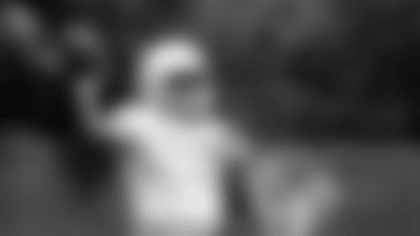We use the same lower body exercise sequence to organize our leg routine. The
exercise sequence remains the same each time our players train the hips and legs.
To create variety our players can substitute different pieces of equipment into the same exercise sequence. The structural design of each piece of equipment is different and affects the recruitment sequence of the muscles involved.
Listed below is the exercise sequence our players use to perform a lower body workout. Our players perform one all out set of each exercise strictly adhering to the Texans four rep rules.
Rule # 1– Raise and lower the weight through the muscles full range of motion.
Rule # 2 –Eliminate momentum during the raising phase of each exercise.
Rule # 3 - Pause momentarily (stop for a count of 1001) in the muscle's contracted position and then make a smooth transition to the lowering of the weight (no sudden drop).
Rule # 4 –Emphasize the lowering of the weight (take longer to lower the weight).*
Our players perform12 reps* on all exercises for the hips and legs.
Texans Hips & Legs Exercise Sequence
- Leg Press/Squat -12 reps
Rest 90 seconds
- Leg Curl - 12 reps (followed immediately by Hip Extension)
- Hip Extension – 12 reps (optional legs straight or legs bent)
* Rest 90 seconds*
- Leg Extension – 8 reps (8-second reps)
Rest 90 seconds
- Hip Abduction 12 reps (followed immediately by second set of Leg Press)
- Leg Press/Squat – 12 reps
Rest 90 seconds
- Hip Adduction – 12 reps
- Hip Flexion – 12 reps
9. Calves – 12 reps (legs straight/legs bent)
We are fortunate to have a wide variety of equipment. Some players develop a preference for one or more pieces of equipment. A player may find one piece of equipment to be more joint friendly than another.

It is the squatting motion that activates the muscles of the hips and legs. It is unnecessary to vertically
load the spine to accomplish this. Observethesepictures of offensive linemen Fred Weary to the right.
The photo on top is the Nautilus Nitro Leg Press. The photo on the right is the
same picture rotated 90 degrees. Each of our six different leg press machines
place our players into this same position.

In the second photo of Fred (the rotated photo) observe the comfortable squatting
position this leg press puts Fred into. We have completely eliminated vertical
compression of the spine. The shearing forces on his lumbar are also eliminated.
The low back muscles are no longer the weak link. We can train his hips and legs
as hard as possible with no risk whatsoever to the lower back. His knees do not
move forward of the ankle in the squatting position helping to minimize shearing
forces to the knee joints. Each of our leg press machines place our players into
this same squatting position without vertically loading the spine, or risking
injury to the lower back or knees.
Our lower body workout consists of two multi-joint exercises (leg press and/or
squat) and eight single-joint (isolation) exercises.
There are advantages and disadvantages of multi-joint exercises. The major advantage of a multi-joint movement is that more than one muscle group is brought into play. Strength is developed collectively by a group of muscles. The leg press is a multi-joint exercise. The hip, knee, and ankle joint are involved. Each of the muscles crossing these joints is directly or indirectly involved in the execution of the exercise.
The disadvantage of a multi-joint movement is that some muscles perform more work than others. The muscles performing the most work receive the greatest benefit, while others receive less. Isolation exercises must be performed to generate maximum strength gains.
To minimize shearing forces on the knees we use equipment that allows our players to keep their knees over the ankles in the squatting position. Do not allow the knee to move forward of the ankle.
There are advantages to performing an exercise one leg at a time and there are advantages to performing an exercise with both legs simultaneously. I encourage our players to alternate workouts with exercises performed with a fused movement arm (both legs work together) and the next workout perform the same exercise with non-fused movement arms (each leg works independent of the other). This will help develop and maintain balance in strength between the two legs.
When performing the leg extension exercise I always use eight-second reps (eight reps x eight-seconds = sixty-four seconds of positive emphasized reps). This reduces the shearing forces in the knee joint (because less weight is needed).
All of the lower body exercises are listed on each player's lower body computer sheet. All similar exercises are grouped together and listed from top to bottom in the following sequence:
Multi-joint Exercises
|
Hammer V-Squat |
 |
|
Pendulum Squat |
 |
Medx Leg Press
 |
 |
Avenger Leg Press
 |
 |
Nautilus Nitro Leg Press
 |
 |
Xpload Incline Leg Press
 |
 |
Pendulum Leg Press
 |
 |
Nautilus Power Plus Leg Press
 |
 |
Leg Extension
|
Nautilus 2st Leg Extension |
 |
|
Nautilus Nitro Leg Extension |
 |
|
Nautilus Xpload Leg Extension |
 |
|
Hammer Iso-Lateral Leg Extension |
 |
|
Avenger Leg Extension |
 |
Leg Curl
Nautilus 2ST Leg Curl
 |
|
Nautilus Xpload Leg Curl
 |
|
Hammer Kneeling Leg Curl
 |
|
Hammer Iso-Lateral Leg Curl
 |
|
Avenger Leg Curl
 |
|
Hip Isolation Exercises
Hip Extension Legs Bent
 |
 |
Hip Extension Legs Straight
 |
 |
Hip Flexion
 |
 |
Hip Adduction
 |
 |
Hip Abduction
 |
 |
Calves
Seated Calf Raises
 |
|
Standing Calf Raises
 |
|
You can view a video of defensive tackle Gary Walker performing a leg sequence by clicking here. ([

](http://play.rbn.com/?url=nfl/nfl/open/2003/texans/demand/walkerworkout070804.rm&proto=rtsp))













